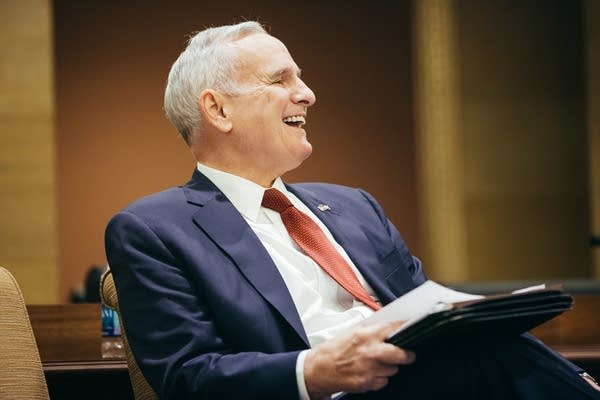Dayton's 8 years as governor: sharp elbows, balanced budgets

Gov. Mark Dayton laughs at a remark inside the Minnesota State Capitol in St. Paul on Jan. 24, 2017.
Evan Frost | MPR News 2017
Go Deeper.
Create an account or log in to save stories.
Like this?
Thanks for liking this story! We have added it to a list of your favorite stories.


